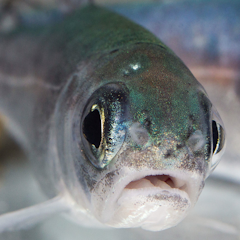
Articles on Aquatic life
Displaying all articles

Over millions of years, a stable climate helped create this biodiversity hotspot. Climate change now threatens it.

Modern pharmaceuticals have saved millions of lives, however, there is growing concern that these same drugs may pose a real ecological concern for human and non-human life alike.

When water warms, it holds less oxygen, and this can harm aquatic life and degrade water quality. A new study finds that climate change is driving oxygen loss in hundreds of US and European rivers.

New findings suggest animal-mediated plant reproduction might have originated in the ocean.

Australia’s beloved billabongs and waterholes are in danger of filling up with eroded soil from farms, leaving little room for the aquatic animals that depend on these vital drought refuges.

As toxic water continues to spill from tailings ponds across mining developments, decades of scientific research provides evidence of how wildlife will be affected.

Neuroactive compounds in antidepressants enter our wastewater and affect how fish function. Identifying the potential damage to fish is paramount for protecting our aquatic ecosystems.

Some species beat the big freeze with natural antifreeze in their blood.

Rising concern about possible environmental damage from the active ingredients in sunscreens could have ripple effects on public health if it causes people to use less of them.

We need to advance our understanding of the effects of microplastics on aquatic ecosystems, especially on small animals at the base of food webs that might be ingesting more of these particles.

Salty water seeps into our soils and groundwater through surface runoff and storm-water pipes. The long-term storage of salt in the environment impacts aquatic life, infrastructure and drinking water.
